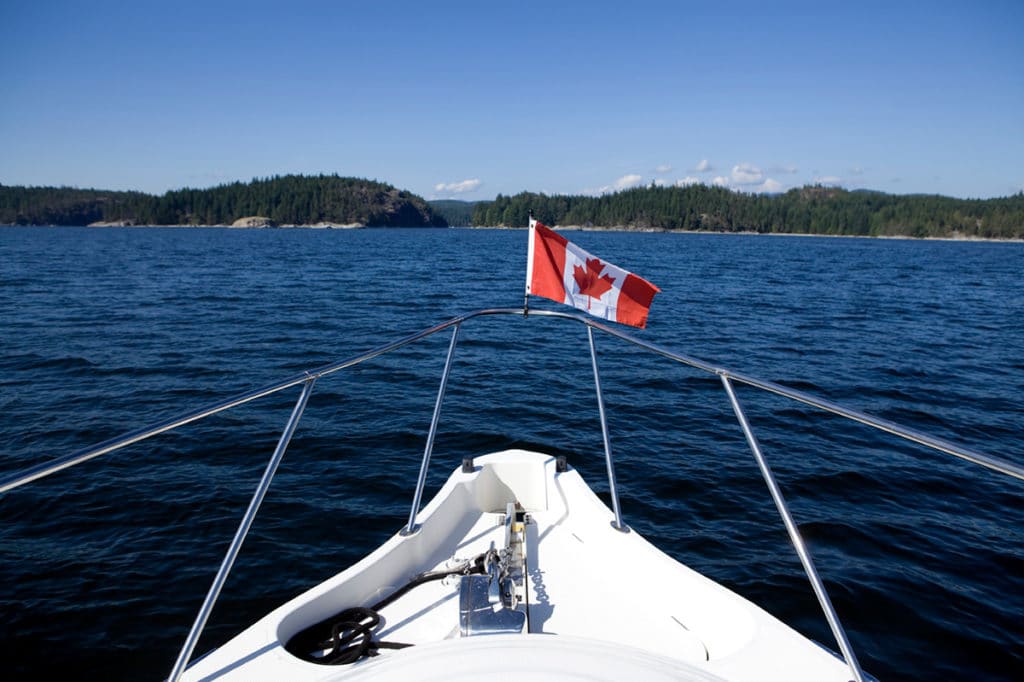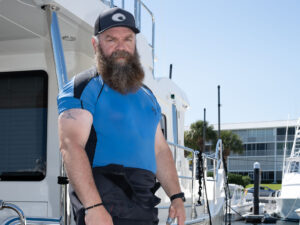
I like to think of myself as somewhat of an international traveler. I’ve cruised to the Bahamas and Cuba (legally) and spent time aboard American boats in parts of the Caribbean as well as South and Central America. Yet, I didn’t know a fundamental rule for cruising into the international waters closest to my own backyard — Canada. Did you know you’re supposed to obtain a VHF license to operate your radio in the Great White North? Neither did I.
In the spirit of gaining knowledge and being a good guest, here are six things you should know about cruising in different accessible foreign waters.
What’s the Frequency?
About using a VHF radio in Canada … Transport Canada has a list of requirements for foreign recreational boaters in Canadian waters. Among them it states, “Currently, all VHF radio operators are required to have a Restricted Operator’s Certificate (ROC) with maritime qualifications. Canada recognizes the American Certificate.” It should be noted that it is not required for Americans to use one in American waters, so you probably don’t have one. You can obtain a certificate through both United States Power Squadrons and Canadian Power and Sail Squadrons courses.
For even more information about visiting Canadian waters, visit tc.gc.ca/eng/marinesafety/debs-obs-quick-quick_visitor-1610.htm#7.
You Do Need a Stinkin’ Permit
For some boaters close to Mexico, particularly those in California, it seems so easy to pop in and out of Mexican waters that they think there’s nothing to it. Not true. Any U.S. boater entering Mexican waters for any length of time is required to purchase a nautical FMM permit. It is a single-use permit, meaning you have to reapply for one for every individual trip. Go online to the Instituto Nacional de Migracion and fill out the forms for “Sport Fishing and Nautical Tourism” (inm.gob.mx/index.php/page/Pesca_Deportiva_Turismo_Nautico/en).
Also, all boaters bringing a boat over 15 feet in length into Mexico must now purchase a temporary import permit. The one-time purchase lasts for 10 years before it needs to be renewed. Many cruising clubs that venture to Mexico have forms and instructions for filing for a temporary import permit in advance.
Q is for Quarantine
I’ve been aboard boats cruising from Florida to Bimini on more than one occasion when the captain did not fly a quarantine flag upon entering port. Oops. Known as the “Yellow Jack,” the quarantine signal flag should be flown upon entering foreign waters as a signal to authorities that you are requesting entry, and also upon returning to the United States after traveling from a foreign port.
Have Some Courtesy
Whenever you cruise to a different country, the accepted practice is to fly a foreign courtesy flag, which is the accepted nautical flag for that particular country. The U.S. Power Squadrons states that for boats without masts — pretty much every powerboat — boaters should fly the flag off the bow or a starboard antenna if strong enough. The courtesy flag goes up only after the quarantine flag is taken down.
For more detailed information about flag etiquette, and for a list of foreign ensigns, visit the U.S. Power Squadrons at usps.org/f_stuff/etiquett.html#honoring-o-n-flags.
Don’t Take Your Guns to Town
Johnny Cash was onto something, especially for bringing firearms abroad. This isn’t to say you can’t do it, just that if you do do it, be extremely well read on the local laws of whatever country you are visiting. Carrying a firearm on board to foreign waters — and even between some U.S. states — is fodder for a full-length feature story; do so unprepared and you’re opening up a Pandora’s box of trouble.
CANPASS for Private Boats
U.S. boaters who frequently travel to Canadian waters can streamline the process by signing up for the CANPASS program for private boats. It’s a pre-screening process in which a boater can call ahead to check in with the Canada Border Services Agency. For more information, go to cbsa-asfc.gc.ca/prog/canpass/canpassprivateboat-eng.html.








